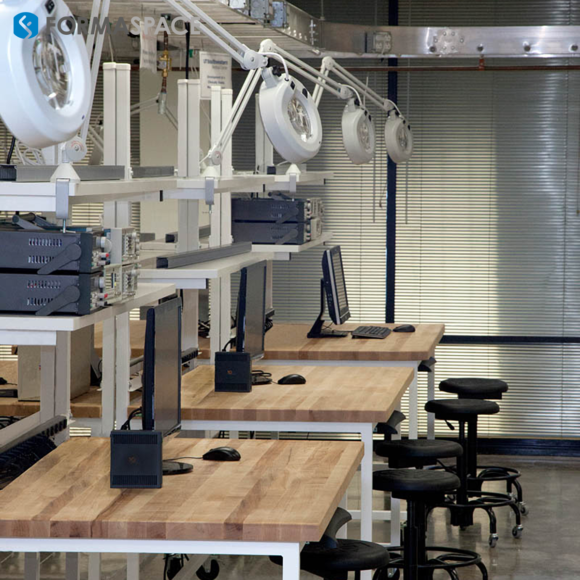Now is the time for educators to plan for a Post-Covid future.
But how should things change to meet the educational needs of the future?
We take a look at ten ways educational institutions need to adapt – to create a brighter future for America’s students.

01. Respect for Teachers
American Education would benefit by Emulating Asia and Elevating Respect for the Teaching Profession
In a world where we are competing to be the best, American students are at risk of falling behind.
A lack of respect for the teaching profession here at home is a key reason.
As any traveler to Asia will know, teachers there enjoy a prestigious, elevated status commensurate with their role as educating the next generation.
Unfortunately, here at home, it’s often the opposite, and during Covid, it’s gotten worse.
Across the nation, teachers have been caught up in political conflicts (such as mask policy debates) and the subject of scorn, threats, bullying, and harassment – to the point that some parents and teachers no longer feel safe attending school board meetings.
This lack of respect has to change, not only for teachers but for all workers facing the public.
02. Recruiting and Retention
The Great Resignation is Wreaking Havoc on School Recruiting and Retention Efforts
The lack of respect is just one of the major challenges facing teachers, who were called upon to improvise and adapt to online and hybrid learning during the height of the Covid pandemic.
The stress from Covid has not let up. As students return to the classroom, there is still fear about transmitting the disease, and many teachers realize that they now face another immense challenge: helping students “catch up” to their grade level after falling behind during the pandemic.
Meanwhile, the pay scale for most K-12 teachers remains far below that of other post-graduate educated professionals.
It’s no wonder that many teachers, facing harassment and stress that threatens their mental health, are giving up the profession they love. For example, in Florida, there is now a shortage of 5,000 teachers – and it could soon rise to 10,000.
Of course, teachers are not alone. Nationwide the “Great Resignation” has led to a record number (nearly 3% in August alone) of people calling it quits, in what one economist commentator calls a “general strike” against low wages and poor working conditions. And now unions are threatening actual strikes as well.
03. Facility Flexibility
Educational Facilities with Flexible Layouts are finding it easier to Manage Hybrid Learning
Educational facility managers faced unprecedented challenges during the pandemic to keep up with ever-changing Covid protocols, including changing the physical layout of classroom configurations to comply with social distancing requirements.
What are the “lessons learned” as a result?
First and foremost, educational facilities built around flexible modular and mobile furniture solutions were the easiest to reconfigure. The ability to either roll mobile furniture into converted spaces (such as gyms) or reconfigure modular furniture to create new layouts proved to be an advantage.
This is something to consider when planning future facilities or when taking advantage of remaining Covid recovery funds from Washington.

04. Evidence-based Pedagogy
Teaching during Covid was a Great Experiment. What Does the Evidence Show?
Before Covid, educators had been pursuing a plethora of different pedagogical approaches to improve teaching outcomes, including:
- Blended Learning
- Computational Thinking (CT)
- Critical Thinking
- Flipped Classrooms
- Fluid Learning
- Gamification
- Project-Based Learning
- TRIZ (Theory of Inventive Problem Solving)
- Use-Modify-Create (Scratch encore)
We might consider ourselves fortunate that many schools had been implementing some form of flipped classroom / project-based learning approach before Covid, as the sudden transition to distance (and hybrid) learning due to the pandemic was certainly less problematic for these schools.
The new challenge is to understand the impact and consequence of the “great experiment” of distance and hybrid learning over the past two years.
We need to gather, study, and interpret evidence-based outcomes to get a clearer picture of what works best for educating a post-Covid world.
05. Distance Learning
Online Learning and Collaboration is now a Mainstream Career Skill
Some educators would love to see the backside of distance learning entirely in favor of a full-time return to in-person learning.
But is that now a realistic idea, given how much traction online meetings have gained as a mainstream communication tool?
In other words, online communication (including learning and work collaboration) is not a temporary phenomenon; it’s a modern skill that’s become part and parcel of job careers – how well you present yourself and communicate through online meeting tools will henceforth have a direct effect on an individual’s work performance after graduation.
Instead of ditching online instruction, let’s figure out how to do it better.
Many teachers who were thrust into ad hoc use of Zoom for classroom instruction would benefit from additional teaching skills training. (See also the section on Specialized Training Roles below).
Schools also need to come to terms with new ethical and sociological issues related to online instruction, including how to deal with bullying. And just like office employers, educators need to create transparent guidelines for monitoring students working in remote education and avoid “secret” spying.

06. Creativity Assessment
Can We Prioritize Creativity and Critical Thinking in Modern Educational Testing?
Because of canceled exams during Covid, we have now had unprecedented gaps in the records of student achievement measured by annual standardized tests.
What should we do about this?
During the pandemic, many colleges and universities responded by dropping the requirement for SAT/ACT scores in student applications.
Standardized tests have been criticized for years (“teach to the test” anyone?) as a stifling intrusion on the teaching profession, which could instead focus energy on fostering creativity and developing student’s critical thinking abilities (qualities that are highly prized by the employment market)
Perhaps this marks a time to rethink our approach to formative and summative assessment overall.
We should also note another emerging trend: AI-based teaching and tools that are being built into newer generations of education software. In some cases, these systems recalibrate the teaching modules as students complete them to automatically adjust for areas that need additional reinforcement.
As will all AI-based tools, we will need to look carefully for unintended consequences (including inherent biases) as well as whether these types of systems help or undermine the role of teachers.

07. Civics, Ethics, and Media Literacy
Students are Unprepared for a Society Dominated by Social Media and Disinformation
Educators have been dealing with issues brought about by the information superhighway of the internet for decades now, including rising cases of plagiarism and even students contracting authors to write custom essays and term papers.
But teachers are facing even bigger threats due to the negative influence of social media and widespread disinformation campaigns that cross the line into conspiracy campaigns.
Young students are unprepared to meet these challenges.
At a basic level, students without an understanding of what they are facing in an online world are vulnerable to a variety of threats, including identify theft; diminished or unrealistic body self-image (due to social media influencers); online bullying, and mental health issues (sometimes to the point of suicide attempts).
Young people also need instruction on how to assess information and separate fact from fiction.
Yet even as mainstream news organizations complain about conspiracy theories and misinformation, they often undermine this effort, as many (such as CNN) persist in allowing online advertisements (often with counterfactual or misleading headlines) disguised as regular reporting (a practice derisively known in online news circles as the “chum box”).
08. Value for Money
Online Education during Covid Sparks Concerns over How to Justify High Tuition Fees at Colleges and Universities
During the height of the Covid pandemic, college and university students were sent packing to continue their education online.
But there was one problem, school administrators still wanted to collect the same expensive tuition fees, even though students could not access the school amenities and shared social experiences that are part of the traditional college experience.
This conundrum has opened up an argument long held by many higher education critics that today’s colleges and universities need to do more to justify their high tuition rates (or recalibrate their cost structures) to offer more “value for money.”
The growing success of MOOCs (massive open online courses) during the pandemic underscores the vulnerability of traditional post-secondary schools – and many schools are looking for new ways to capitalize on online education, particularly for the non-traditional “lifelong learning” students who are far beyond their college years but are looking to change careers.

09. Specialized Training Roles
Teaching Roles Changed Quickly During Covid. Is more Specialization the Answer?
The Covid pandemic also uncovered the fact that some teachers are more capable than others of adapting to new technology and teaching methods.
What should we do about this?
This might trigger a rethink about teaching training and preparation.
For example, we might be well served with more investment in teacher training, including triple T (teachers training teachers) programs.
Specialization might be the answer as well, particularly for large online classes. For example, teachers that are highly skilled at communicating with students via the camera might take the lead role, while other teachers working directly with small groups of students or one-on-one with individuals who need extra help.
This approach might make sense in college and university settings as well as address a long-felt need to improve the quality of teaching by inexperienced grad students, who are often thrust into the role of a teacher with little to no background preparation. Pooling the talent and promoting the best instructors to be the face of classroom instruction might help solve this long-standing issue, leaving grad students to provide individual and small group tutoring as they develop their skills as instructors.
10. Career Mentoring
Companies Looking to Grow a Skilled Workforce need to Connect to and Support Young Students
Educators and employers must come together in the post-Covid era to promote a greater connection between classroom instruction and the needs of industry, particularly its need for a larger number of highly-skilled STEM-based workers.
How can we accomplish this goal?
The answer is to start early and to be as inclusive as possible.
Mentoring is one of the most effective ways to engage with young students, particularly those from families without college degrees or professional backgrounds, or other groups, such as girls, who may be intimidated in pursuing STEM-based careers in fields such as engineering or manufacturing.
Employers can also sponsor student learning programs, such as on-campus makerspaces, which can encourage the type of creativity and problem solving that is so sought after in 21st-century job applicants.
Formaspace is Ready to Assist
Building modern education facilities is a major focus here at Formaspace.
We are known for our high-quality, custom furniture built here in America at our Austin, Texas factory headquarters.
If you can imagine it, we can build it.
Contact your Formaspace Design Consultant today and find out why Formaspace partners with so many educational clients, including most Ivy League colleges and universities and leading K-12 school districts across the country.








